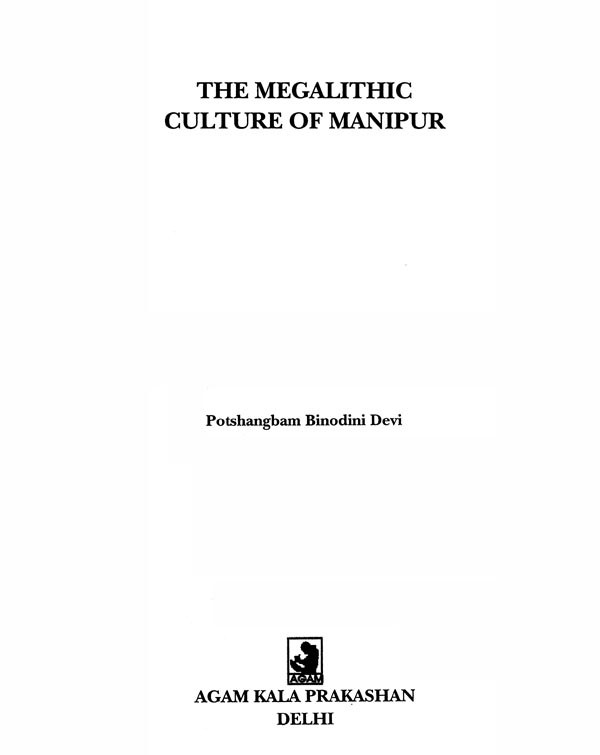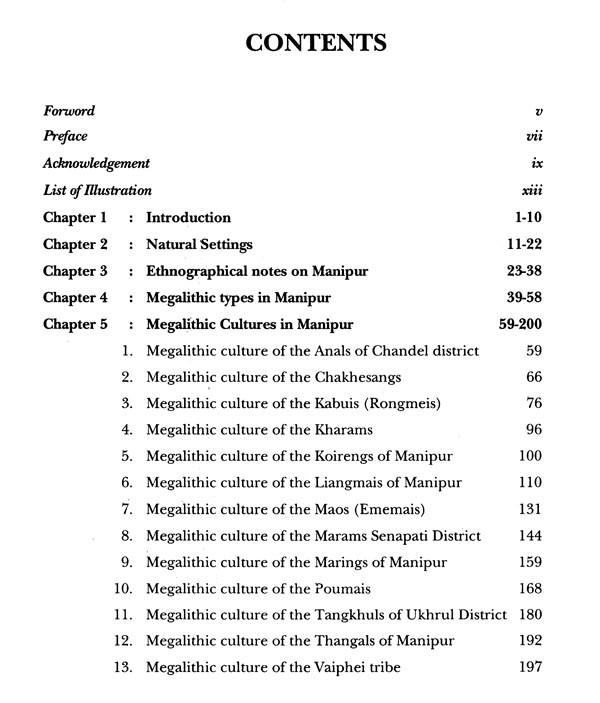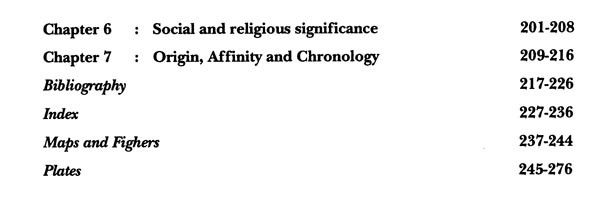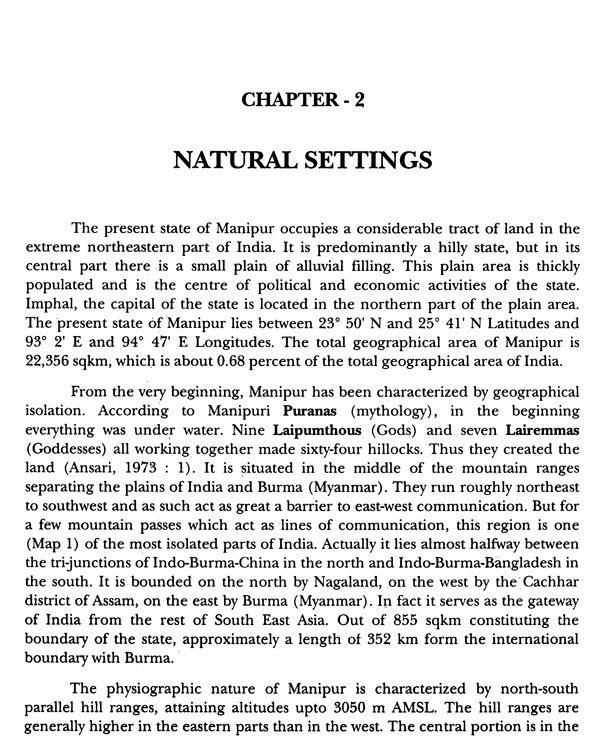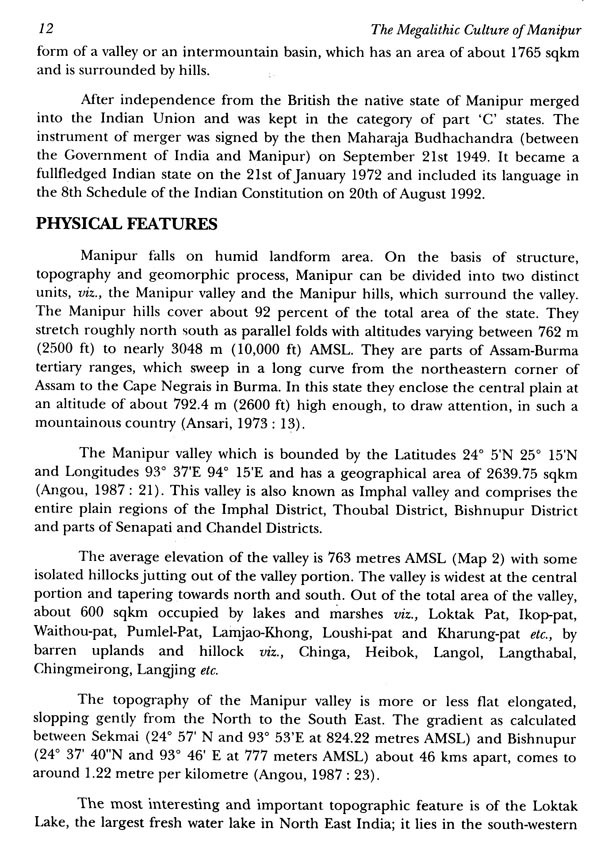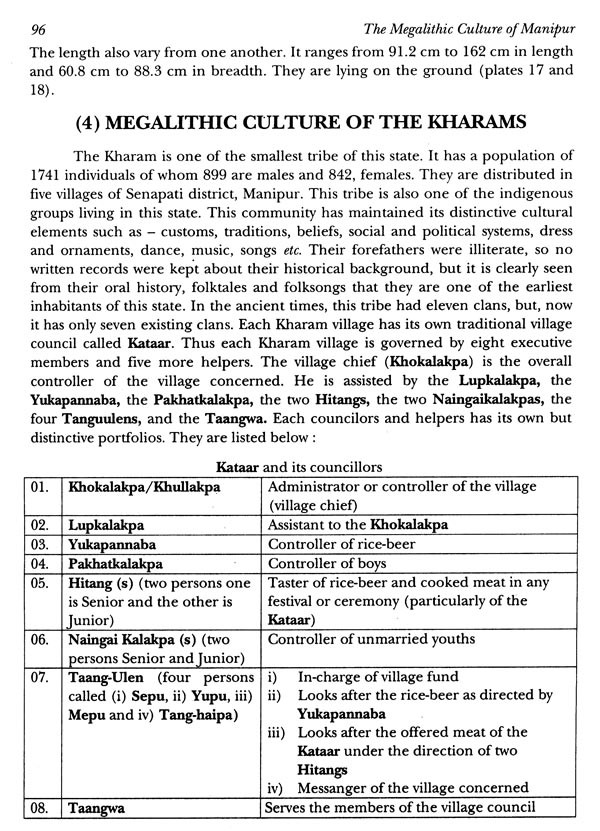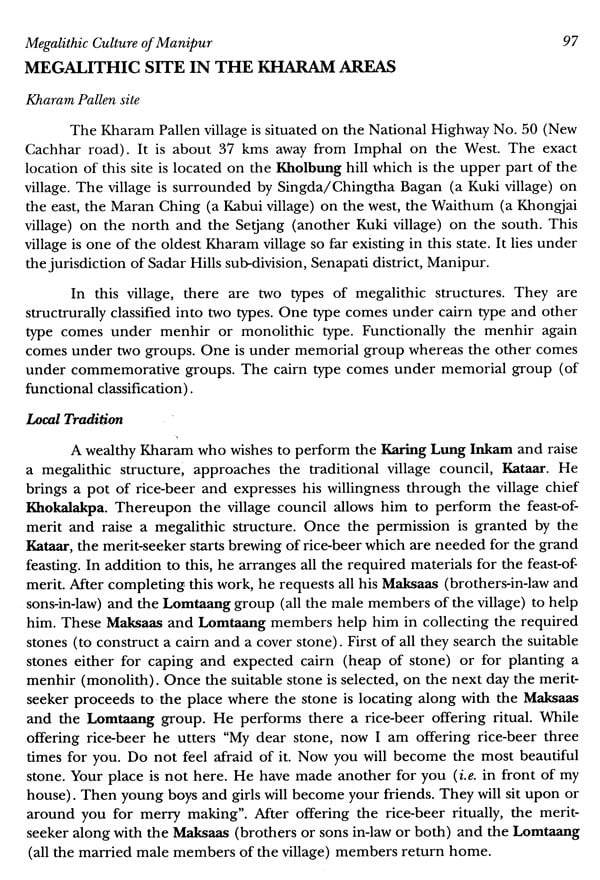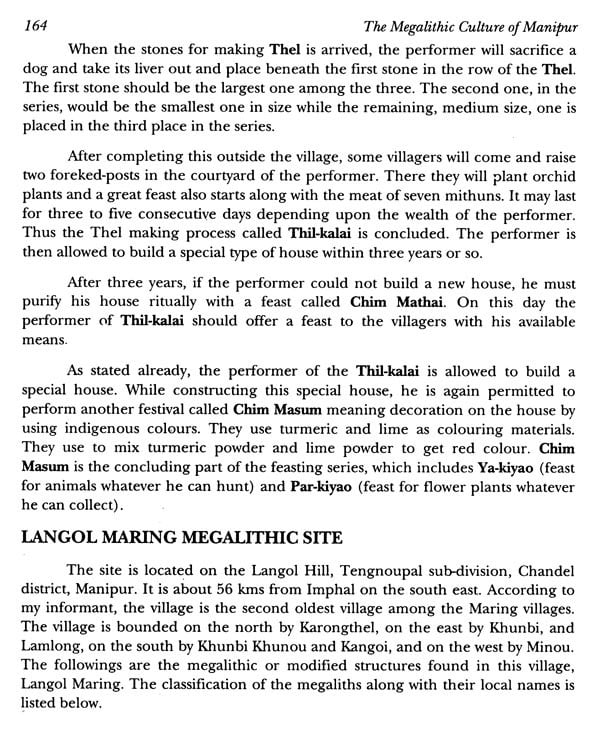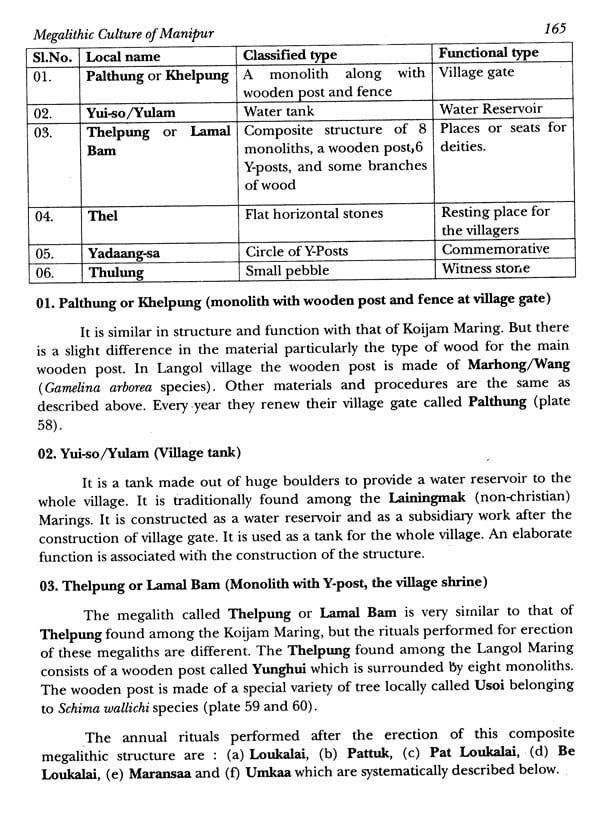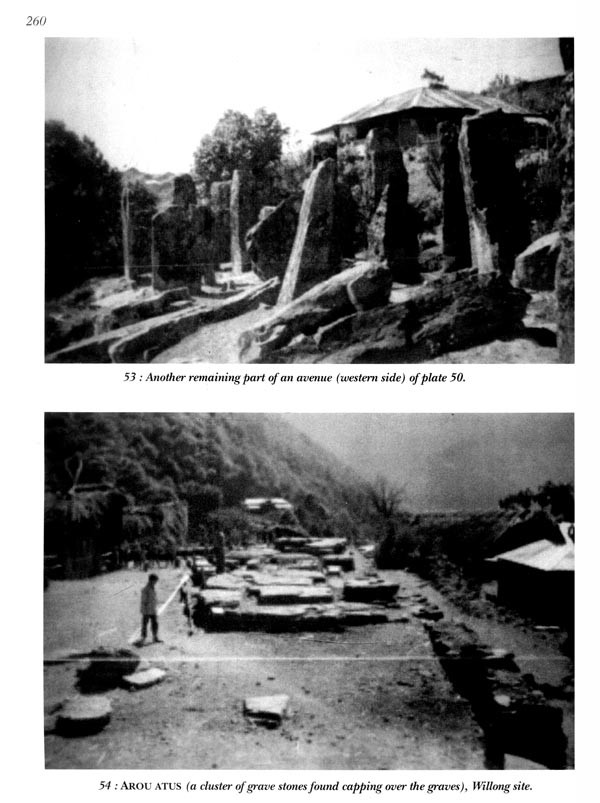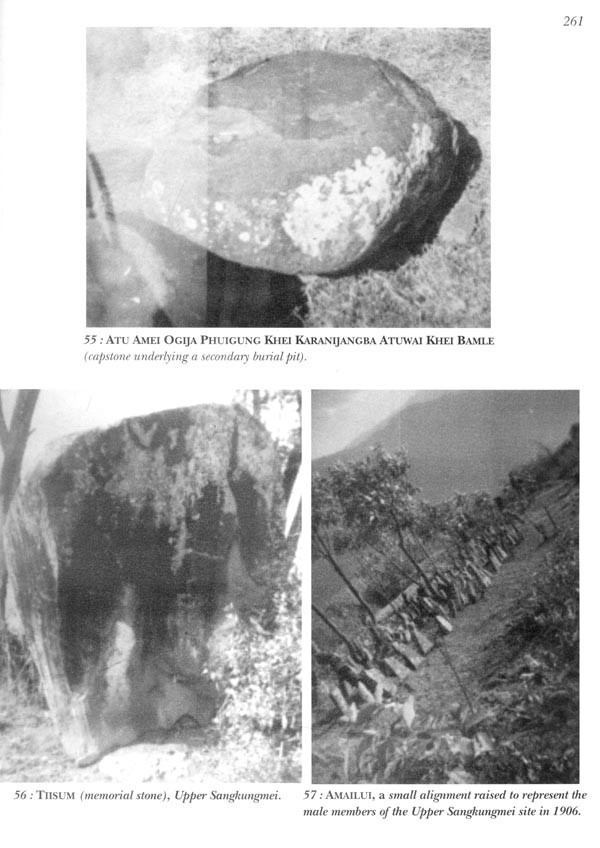
The Megalithic Culture of Manipur
Book Specification
| Item Code: | AZG779 |
| Author: | Potshangbam Binodini Devi |
| Publisher: | AGAM KALA PRAKASHAN, DELHI |
| Language: | ENGLISH |
| Edition: | 2011 |
| ISBN: | 9788173201134 |
| Pages: | 292 (Throughout B/w Illustrations) |
| Cover: | HARDCOVER |
| Other Details | 11.00x9.00 inch |
| Weight | 1.15 kg |
Book Description
Explored Poumai District Senapati, Manipur in Associate Director.
Served Co-Ordinator Resource Person EMMRC under HRD, of India 2011). Completed projects, published fifteen research Presented papers in International Congress Conferences: Manila (2006), Mumbai (2006), University (2007) Lucknow University (2010).
Member Pacific Prehistory Association (IPPA, Australia). Members Indian Society for Prehistoric Quaternary Studies (ISPQS, Pune) Society of Asian Archaeology. (SOSAA, Pune). Executive Member of ISQPS three 2011). Worked as Curator, Manipur University Museum, (1989-1990), Project Fellow (1992 1995), Guest Lecturer, M.U. (1995 2002).
Fortunately, in parts of eastern and northeastern India the raising of megalithic monuments continues to be a living practice among certain communities speaking Dravidian, Austro Asiatic and Tibeto Burman languages, and so archaeologists and anthropologists have an opportunity to study the entire process of the construction of these structures and learn their true functions. Miss P. Binodini Devi has carried out such a study among several tribal communities of Manipur, one of India's easternmost states which borders on Myanmar. She conducted extensive and intensive field work among a number of communities in all the nine districts of the state, but particularly in the Bishnupur, Chandel, Churachandpur, Imphal East and West, Senapati and Ukhrul districts over period of six years stretching from 1988 to 2010. The communities studied by her include the Anals, the Chakhesangs, the Kabuis (Rongmei), the Kharams, the Koirengs, the Liangmais, the Maos, the Marams, the Poumais, the Tangkhuls, the Thangals and the Vaipheis.
Miss Binodini Devi personally visited a larger number of tribal villages, examined a number of megalithic sites and the nature of their location in relation to the inhabited part of the village, listed the various types of megaliths present there and took their measurements. Besides making her observations at each site, she has collected valuable data from informants who have firsthand knowledge of the megaliths of their community.
The second chapter deals with the geographical background of the area (Manipur). It includes a brief account of the geographical features of the region, its geology, drainage system, soil type, climate, fauna and flora. In the third chapter an attempt has been made to give a brief ethnographical and historical notes on different ethnic groups. Much importance is given to those eleven tribes which are associated with the living megalithic traditions.
The fourth chapter deals with different megalithic aspects based on the structural and functional types. This chapter has two parts. The first part (Part-I) includes the description of different megalithic structures classified into seven types on the basis of morphological features. The second part (Part-II) deals with the megalithic monuments which have been classified on the basis of their functions. Functionally, the megalithic monuments are broadly divided into eight types.
The fifth chapter contains a report on the investigation carried out by the author among the eleven tribes. The investigation report is presented fewer than eleven units.
During the earlier ages of human existence in India, we expect to get a more or less uniform cultural pattern for large parts of the country. During the Paleolithic period, we use only two basic cultural traditions tit, the Soan complex of northwestern India and the great handaxe cleaver tradition of peninsular India. During Mesolithic period, we have a more or less uniform pattern for the whole country. But from the Neolithic onwards, the cultural diversity becomes more and more pronounced. To understand such a diverse pattern of cultural development, we have to look into the diverse geological and physiographical features of these regions.
**Contents and Sample Pages**
